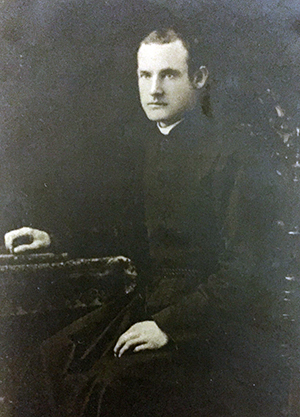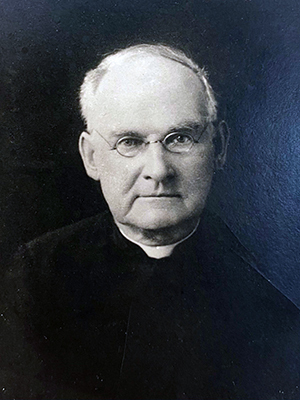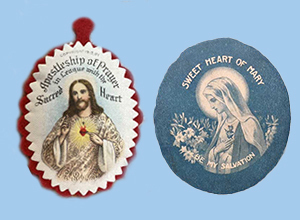Servant of God Columba O’Neill

On November 5, 1848, John O’Neill was born in Mackeysburg, Pennsylvania, to parents Michael and Ellen (McGuire). He had a congenital foot abnormality and was baptized subconditione just two days later because he was not expected to live. To the surprise of the family, John lived seventy-five years—a lifemarked by humility and a healing sanctity.
John’s mother spent hours with John each day teaching him to walk. He eventually developed a fairly graceful gait, but it became clear, much to John’s humiliation, that he was physically unable to follow his father and work in the coal mines. John, however, took an interest in shoemaking and went to work as an apprentice for the village cobbler.
During his teenage years, John began to feel “a special call to serve God in the religious state.” Amid the trials of the Civil War, he set out west as an itinerant cobbler, eventually making it all the way to California. During his travels, he attended daily Mass and spent long hours praying as he continued to discern his calling.
The first religious community to which John applied rejected him due to his foot condition. Nevertheless, just as he was not discouraged earlier in life when he could not work in the mines, John remained confident in his sense of calling.
From a fellow cobbler, Johnnie O’Brien, he learned of the Congregation of Holy Cross. Animated by what he heard, John wrote to Fr. Augustin Louage, C.S.C., the Novice Master at Notre Dame. After meeting with Fr. Louage and Fr. Edward Sorin, C.S.C., Superior General, John joined Holy Cross on July 9, 1874 and on September 8 entered the novitiate and took the name Columba.
Explore the website for Br. Columba’s cause

On August 15, 1876, Br. Columba professed Final Vows in the Congregation. Having taken the “fourth vow” of mission, Br. Columba volunteered to go to India or to Molokai to help Fr. Damien in his work among the lepers. Instead, he was assigned to Saint Joseph's Orphan Asylum in Lafayette, Indiana. It was there that the first cures were reported through Br. Columba’s prayer to the Sacred Heart of Jesus through the Immaculate Heart of Mary.
By the summer of 1885, Br. Columba returned to Notre Dame and was assigned tothe campus shoe shop, where he remained until his death from influenza on November 20, 1923. On the onehand, not much happened during this thirty-eight-year span at Notre Dame: a brother living a simple life, praying in secret, making and repairing shoes. He seldom stepped foot outside of Notre Dame, except for occasional visits to his sister in Keokuk, Iowa.
On the other hand, Br. Columba's healing ministry spread far beyond the bounds of Notre Dame's campus. Around 1890, Br. Columba began producing and distributing images of the Immaculate Heart of Mary and cloth badges of the Sacred Heart of Jesus, which he distributed with instructions to pray a novena. Cures began to be reported throughout the South Bend area and beyond.
As word spread, Br. Columba became known as the “Miracle Man of Notre Dame,” just like his saintly confrere who he met, St. André Bessette, was known as the “Miracle Man of Montreal.” Yet, he remained dedicated to his work as a cobbler. From his shoe shop, he would attend to the many students from campus, as well as the visitors who came from afar. He also wrote literally thousands of letters to those who wrote to him of their physical sufferings and requests for prayers and “favors” through his intercession to the Sacred Heart of Jesus.
Read a longer history of Br. Columba’s life

At his funeral, the Provincial Superior, Fr. Charles O'Donnell, C.S.C., described Br. Columba as “a miraculous man cut from an apparently un-miraculous cloth, he would lead thousands of individuals to experience intimately the healing love of ‘these Two Hearts’: The Sacred Heart of Jesus and the Immaculate Heart of Mary.”
While widely recognized for his saintliness, Br. Columba’s cause took a backseat to other causes within the Congregation. Currently, work is progressing on his cause, with the Diocese of Fort Wayne-South Bend preparing the libellus to be sent to the Dicastery for the Causes of Saints.
Servant of God Columba O’Neill, now joins our five other Holy Cross religious whose sanctity and virtue will hopefully one day lead to their canonizations, Blessed Basile Moreau, Venerable Patrick Peyton, Servant of God Theotonius Ganguly, Servant of God Flavian Laplante, and Servant of God Vincent McCauley.